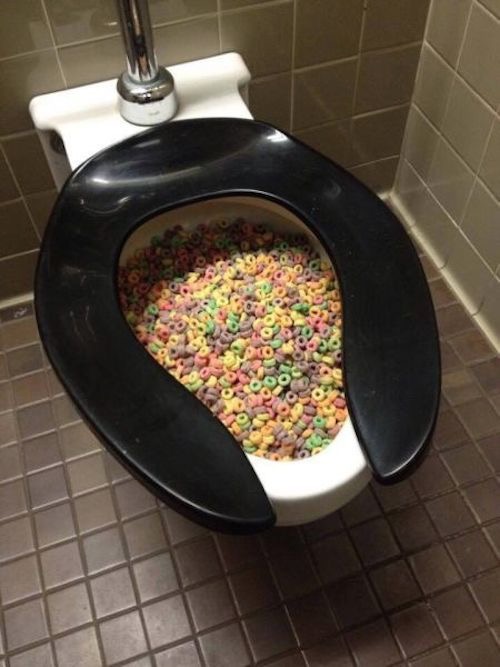Are You Able to Flush Food in the Toilet?
Are You Able to Flush Food in the Toilet?
Blog Article
Just how do you feel in relation to Is it safe to flush food (especially rice) down the toilet??

Intro
Many individuals are often confronted with the problem of what to do with food waste, particularly when it concerns leftovers or scraps. One typical inquiry that develops is whether it's fine to purge food down the bathroom. In this article, we'll look into the reasons individuals may consider purging food, the consequences of doing so, and alternate methods for appropriate disposal.
Reasons that individuals might think about purging food
Lack of understanding
Some people may not know the possible harm caused by flushing food down the toilet. They may wrongly think that it's a safe technique.
Convenience
Flushing food down the toilet may look like a fast and simple option to taking care of undesirable scraps, specifically when there's no neighboring garbage can readily available.
Idleness
In many cases, individuals might just choose to flush food out of sheer idleness, without taking into consideration the effects of their activities.
Consequences of flushing food down the commode
Ecological effect
Food waste that ends up in rivers can contribute to air pollution and damage aquatic ecological communities. In addition, the water utilized to flush food can stress water sources.
Pipes problems
Flushing food can bring about stopped up pipes and drains pipes, creating pricey plumbing repairs and aggravations.
Kinds of food that should not be flushed
Fibrous foods
Foods with fibrous structures such as celery or corn husks can get tangled in pipes and trigger obstructions.
Starchy foods
Starchy foods like pasta and rice can soak up water and swell, leading to obstructions in pipes.
Oils and fats
Greasy foods like bacon or cooking oils need to never ever be flushed down the toilet as they can solidify and cause obstructions.
Proper disposal methods for food waste
Utilizing a waste disposal unit
For homes equipped with garbage disposals, food scraps can be ground up and flushed with the plumbing system. Nevertheless, not all foods are suitable for disposal in this manner.
Recycling
Particular food product packaging products can be recycled, decreasing waste and reducing ecological influence.
Composting
Composting is an eco-friendly means to take care of food waste. Organic materials can be composted and made use of to enhance soil for horticulture.
The importance of correct waste management
Lowering environmental injury
Appropriate waste monitoring practices, such as composting and recycling, aid minimize contamination and maintain natural resources for future generations.
Securing pipes systems
By avoiding the practice of flushing food down the bathroom, home owners can protect against pricey plumbing fixings and maintain the stability of their pipes systems.
Final thought
Finally, while it may be appealing to purge food down the toilet for benefit, it's important to comprehend the prospective consequences of this action. By taking on correct waste management practices and taking care of food waste responsibly, people can add to healthier plumbing systems and a cleaner setting for all.
FLUSH FOOD DOWN THE TOILET?
FLUSHING FOOD CAN CAUSE BLOCKED DRAINS IN YOUR HOME
All of the plumbing fixtures in your home are connected to the same sewer pipe outside of your home. This outdoor sewer pipe is responsible for transporting all the wastewater from your home to the Council sewer mains. Even small pieces of food that go down the kitchen sink can cause problems for your sewer. It should therefore be obvious that flushing larger bits of food, such as meat, risks a clog in either the toilet itself or the sewer pipes. Flushing greasy food is even more problematic because oil coagulates when it cools, coating the interior lining of your pipes.
THE TOILET IS NOT A BIN
Food isn’t the only thing that people shouldn’t be flushing down the toilet. People use the toilet to dispose of all kinds of things such as tampons, makeup wipes, dental floss, kitty litter and even underwear. Water goes to great lengths to educate residents about the high costs and stress placed on wastewater treatment systems simply from people flushing the wrong stuff down the toilet. It costs taxpayers millions of dollars each year, and homeowners thousands in blocked drain repairs.
FLUSHING FOOD IS A WASTE OF WATER
Flushing food is a waste of our most precious resource - water. In June this year Level 1 water restrictions were introduced to protect water supply from drought conditions. Much of New South Wales continues to be affected by prolonged drought with recent figures revealing up to 97 per cent of the state remains in drought. Depending on whether you have a single or dual flush toilet, every single flush uses between five and 11 litres of water. In the current climate this is a huge amount of water to be wasting on flushing food that should be placed in the bin (or better yet, the compost).
https://www.jabplumbingsolutions.com.au/blog/can-you-flush-food-down-the-toilet

I am very excited about Think Twice Before Flushing Food Down Your Toilet and I am praying you appreciated the new blog entry. If you enjoyed our post kindly make sure you remember to pass it around. We appreciate your readership.
Go Deal Now Report this page